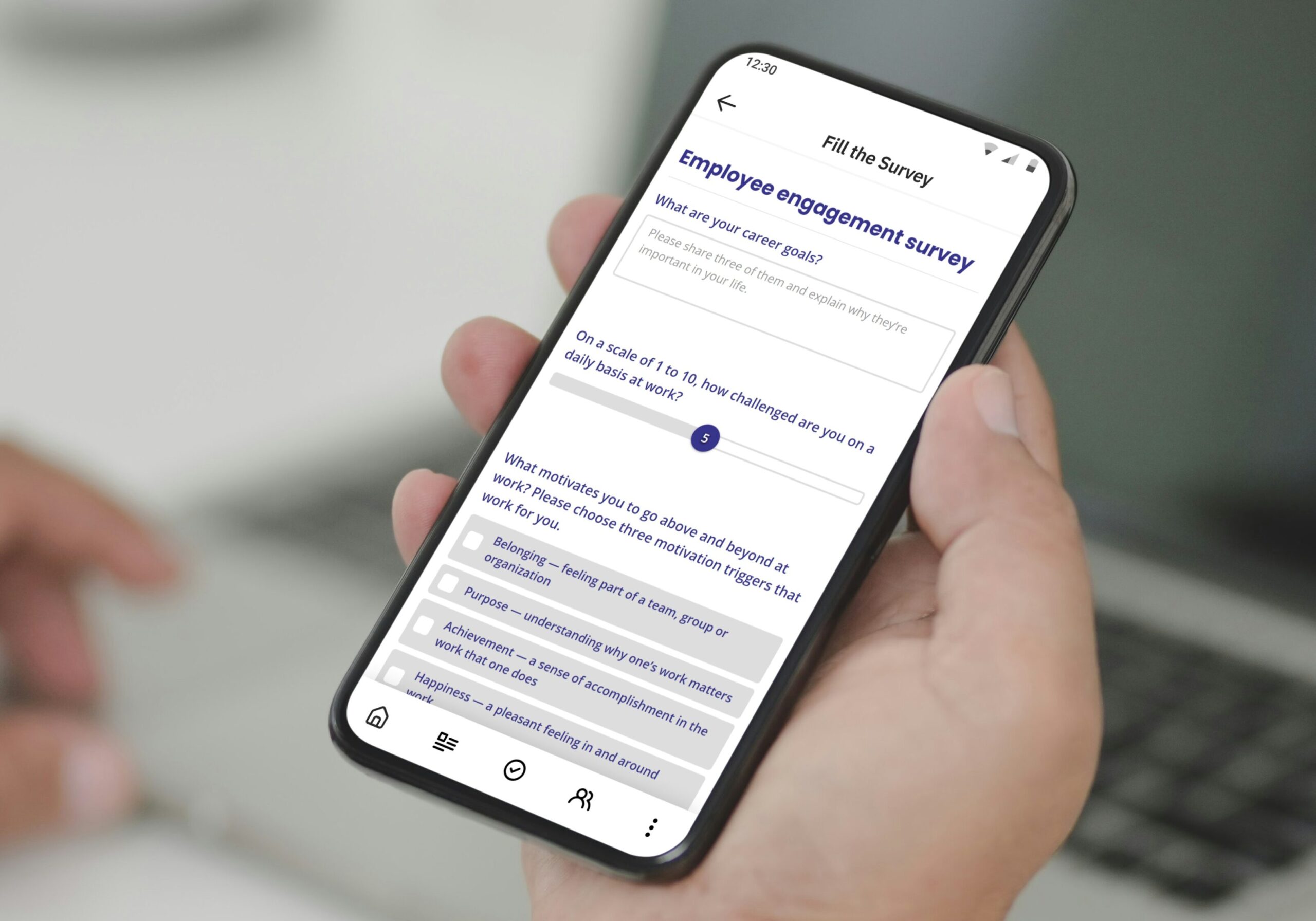
8 key factors measured in employee satisfaction surveys
When it comes to employee satisfaction surveys, it’s not just about asking, “Are you happy at work?” It’s about diving deep into various aspects that contribute to an employee’s overall experience.

Let’s take a closer look at what can be examined in employee satisfaction surveys and what sample questions can be asked in each area:
1. Job satisfaction
Job satisfaction is the cornerstone of employee engagement. It assesses how content employees are with their roles, responsibilities, and daily tasks. A typical survey question might be, “On a scale of 1-10, how satisfied are you with your current job responsibilities?” This provides a quantitative measure of satisfaction that can be tracked over time.
2. Work-life balance
In today’s fast-paced world, maintaining a healthy work-life balance is crucial for employee well-being. This factor measures how well employees can manage their professional and personal lives. For instance, an employee satisfaction surveys might ask, “How often do you feel you have to work outside of your regular hours to complete your tasks?” Understanding this balance helps organizations implement policies that support their workforce better.

3. Professional development opportunities
This factor evaluates whether employees feel they have sufficient opportunities to grow and advance in their careers. A pertinent question could be, “Do you feel you have sufficient opportunities to learn new skills in your current role?” By gauging this, companies can identify gaps in their training and development programs and take steps to enhance them.
4. Leadership and management
Effective leadership is critical for high employee engagement. This measures how employees perceive their managers and company leaders. For example, a survey might include, “How well does your manager communicate the company’s goals and your role in achieving them?” Good leadership fosters a positive work environment and drives engagement.
5. Company culture and values
Assessing company culture and values involves understanding how well employees align with and understand the organization’s ethos. A typical question could be, “To what extent do you feel the company’s values align with your personal values?” This helps in ensuring that the organizational culture supports employee engagement and satisfaction.
6. Recognition and rewards
Recognition and rewards are significant motivators for employees. This factor measures how well the company acknowledges and rewards good performance. An example question might be, “How often do you receive recognition for your work contributions?” Regular recognition can boost morale and motivate employees to perform better.

7. Workplace environment
The workplace environment includes both physical and social aspects. It’s essential to ensure that employees have the necessary tools and a conducive environment to perform their jobs effectively. A survey might ask, “Do you have the necessary tools and resources to perform your job effectively?” This helps in identifying any logistical or environmental issues that might hinder productivity.
8. Team dynamics
Good relationships with colleagues can significantly impact engagement. This factor measures the level of collaboration and camaraderie within teams. A question like, “How would you rate the level of collaboration within your team?” can provide insights into team dynamics and areas for improvement.
By measuring these factors, companies can get a comprehensive view of their employees’ engagement levels and identify specific areas for improvement.

Additional resource
To dive deeper into creating effective employee satisfaction surveys, download our comprehensive 50-page guide. This resource includes over 150 example questions you can ask your employees and detailed discussions on strategies to implement. This guide is designed to help you create impactful surveys that drive positive change and enhance engagement in your organization.
Implementing an effective employee satisfaction survey strategy involves careful planning, clear communication, and a commitment to act on the results. By defining clear objectives, choosing the right survey type, designing well-crafted questions, ensuring anonymity, and sharing and acting on the results, you can create a cohesive and engaged workplace. Regularly seeking and acting on employee feedback not only enhances employee satisfaction and retention but also drives the overall success of your organization. Let the voice of your employees guide you toward a brighter, more collaborative future.
